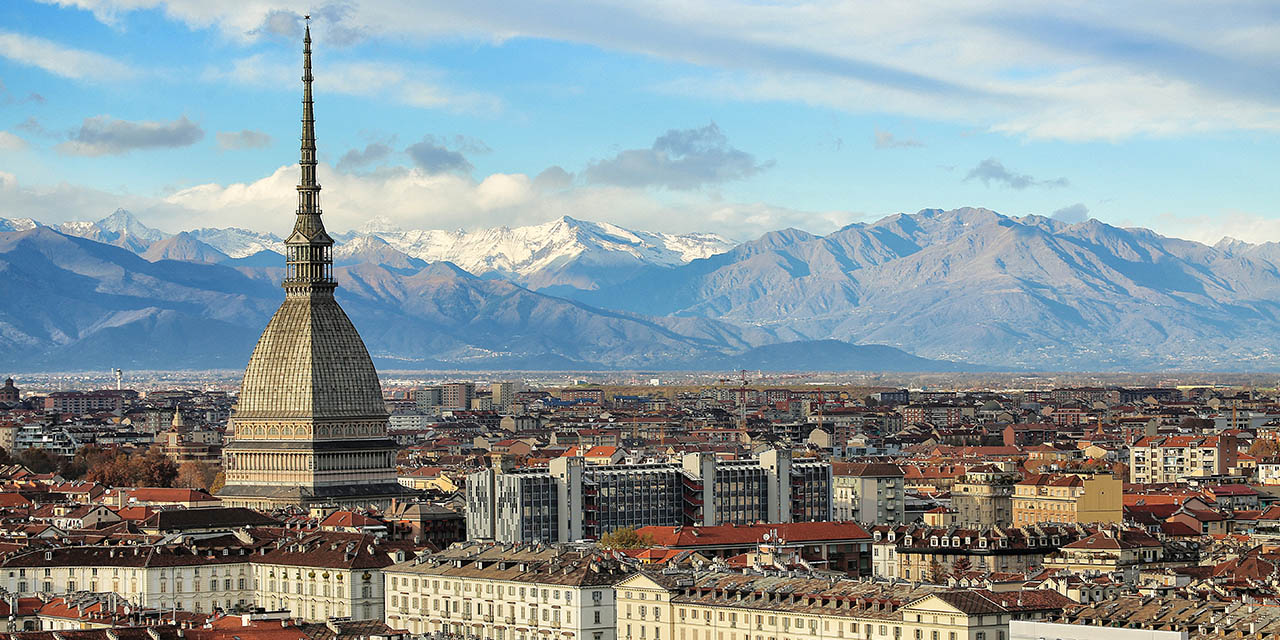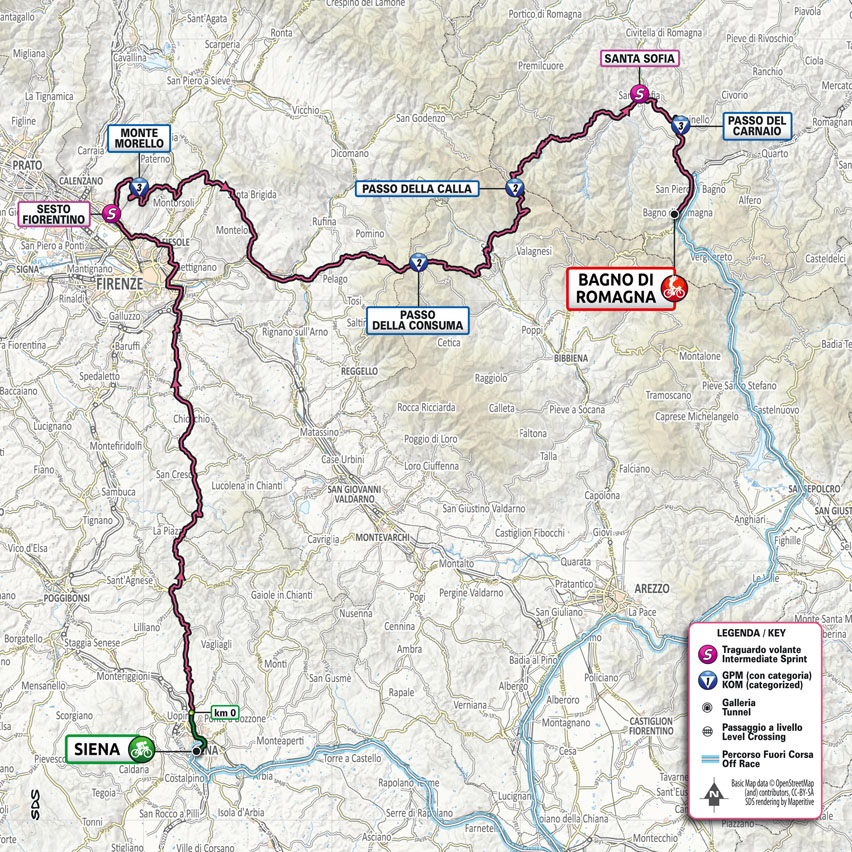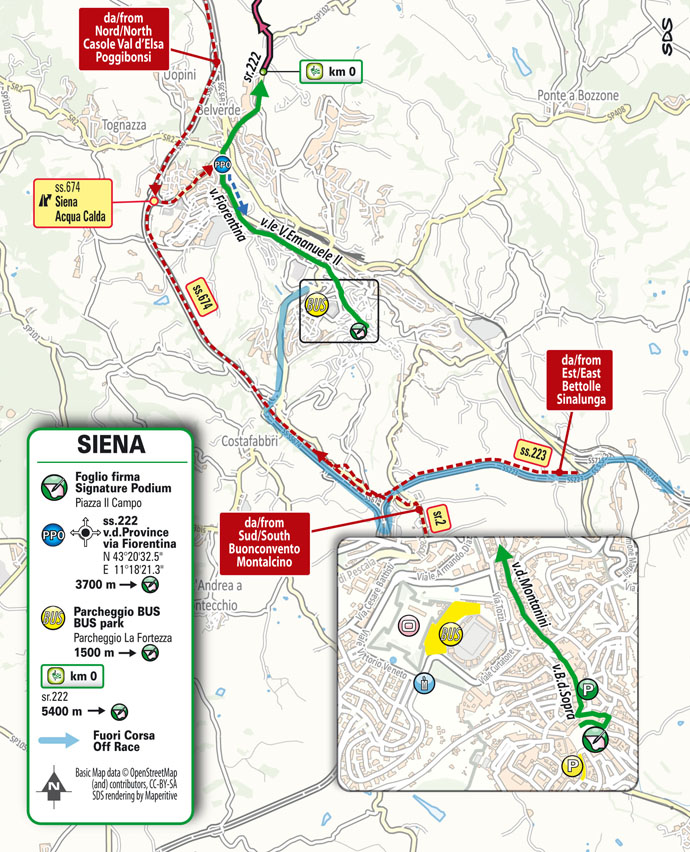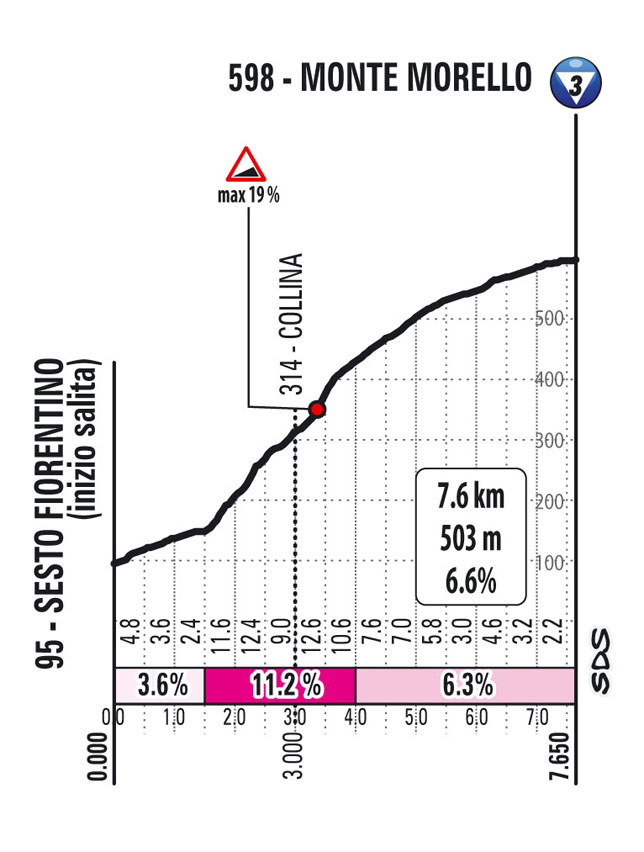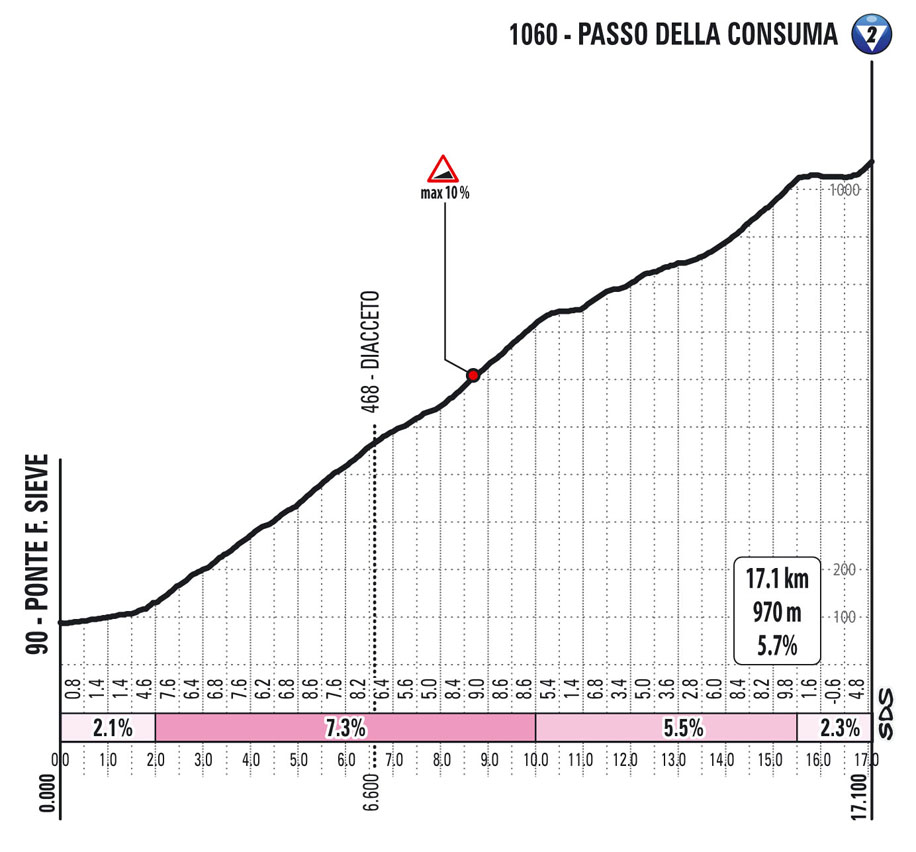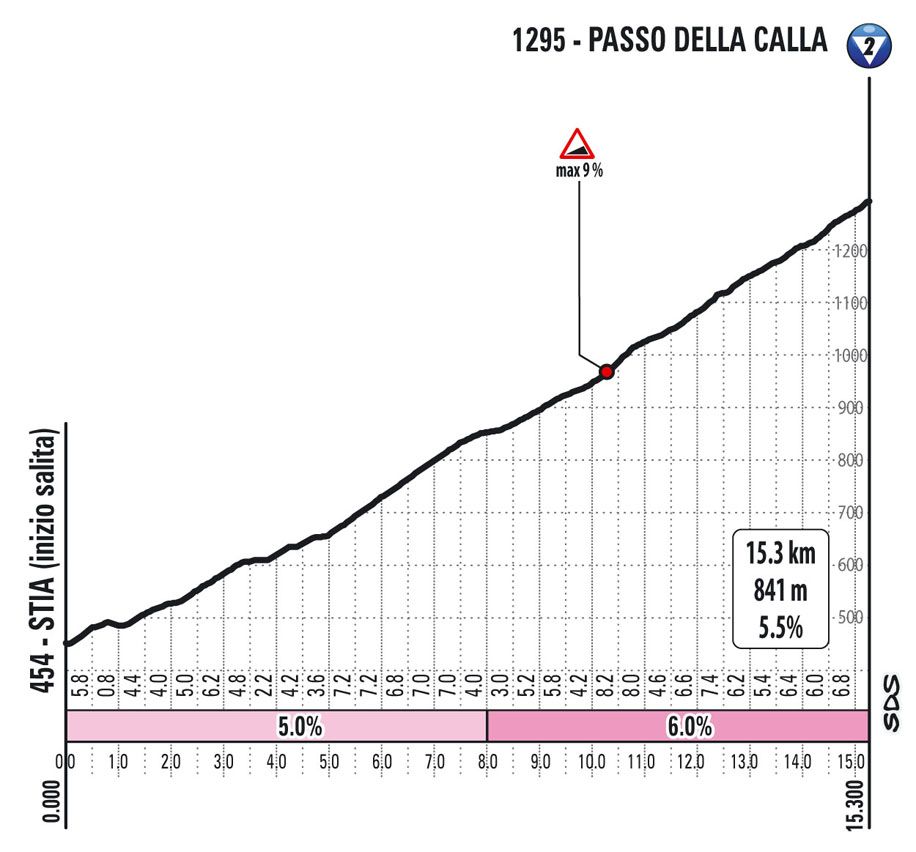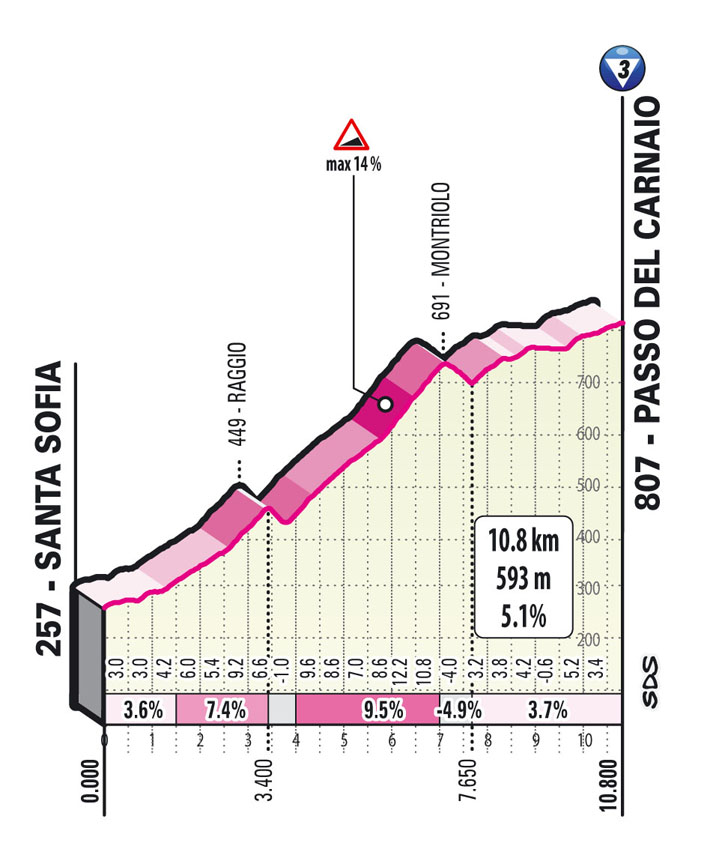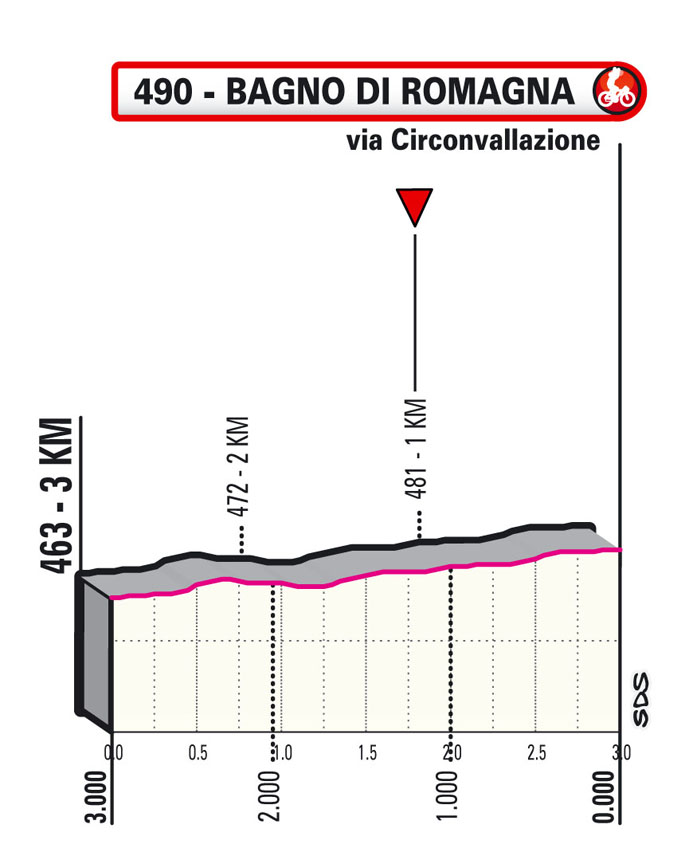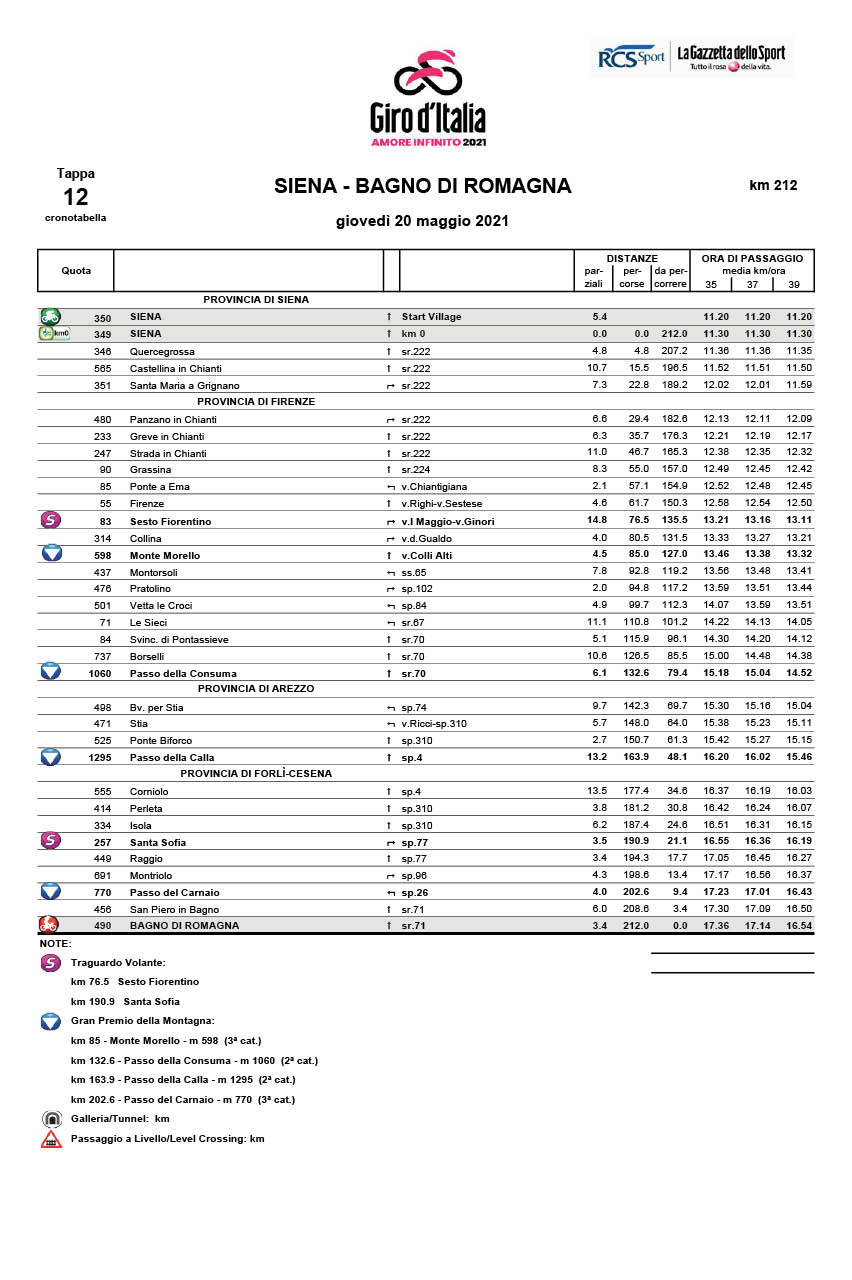profile
map
technical info
A challenging stage across the Apennines. Starting in Siena and crossing the Chianti region all the way to Florence, the route passes through Ponte a Ema [Bartali], Florence and Sesto Fiorentino [Martini]. Here, the riders will negotiate a succession of ascents: Monte Morello (with peaks exceeding 15%), Passo della Consuma (avg. 6% gradient), Passo della Calla (avg. 5% gradient) and Passo del Carnaio, featuring some challenging bits with gradients up to 14%, followed by a technical descent leading to the final 5 km.
Final kilometres
Starting from 3,500 m from the finish, the last kilometres either descend, or are a false flat up. The route drops down quickly on wide roads, with several curves and hairpins, and briefly touches the centre of San Piero in Bagno. The final kilometres are dotted with roundabouts. The stage homes in on tarmac road.
start / finish
climb detail
final kilometres
itinerary timetable
tourist info
Host city:
Siena
Overview
Here, it feels as if time has stopped at the 13th century, when the city’s artistic and architectural heritage started to develop, earning Siena its endless renown. It has been on the UNESCO World Heritage List since 1995, owing to its well-preserved mediaeval structure.
The main square, Piazza del Campo, is the mandatory starting point to describe the city. The square has a unique shell shape, and gently slopes towards the centre. This is where the famous Palio takes place: every year, in summer, the different Contrade (city quarters) challenge each other in a compelling horse race. All around are a number of monumental buildings, such as Palazzo Sansedoni and Palazzo Pubblico. Towering over the square is the majestic Torre del Mangia, built in the 1340s. Soaring an impressive 102 metres, it is just as tall as the Duomo belfry, to symbolize the balance between worldly and divine power. But there is more to Siena than just Piazza del Campo, including little streets and alleys teeming with little shops and craft stores where you can buy local handmade products or taste the famous cantucci cookies with a glass of Vin Santo. Throughout the narrow alleys, all the way to the wide Piazza del Campo, you can actually feel the real atmosphere of this city – contemporary yet ancient, monumental yet lively.
Bagno di Romagna
Overview
A borderland between Romagna and Tuscany, Bagno di Romagna is a millenary village, famous for its thermal waters since Roman times, gateway to the Foreste Casentinesi National Park and temple of slow living, since 2005 it has been an “Orange Flag” town of the Italian Touring Club.
From the lakes in the middle of the woods to the Gnome Trail, from the buildings designed by the long Florentine domination to the inns and starred restaurants, here you can breathe the nature of an Apennine village suspended between two lands, warm and welcoming.
The purity of the elements, the natural warmth of the waters, the intensity of the flavours, the cordiality of a small mountain community, the quality of the services find their maximum expression in the spas, ready to pamper you and cure your body and soul.
More than 400 km of paths to be covered on foot or by bike, mostly immersed in the Foreste Casentinesi National Park, make Bagno di Romagna the ideal destination for lovers of cycling and outdoor activities.
Speciality food
In Bagno di Romagna, the gastronomy of Romagna (famous all over the world for its fresh pasta, from lasagne to tagliatelle, from passatelli to tortellini and ravioli, right up to the ever-present piadina) blends with the more sober Tuscan tradition (unbeatable in meat and salami dishes, not to mention the assorted crostini, with liver pâté, or porcini mushrooms and many other variations).
Here you can enjoy unforgettable culinary experiences, to be savoured in the more than 50 restaurants scattered throughout the territory, ranging from traditional family-run trattorias to more refined and prestigious establishments where you can savour more innovative and original cuisine (including some awarded a Michelin star).
The basis of the most distinctive dishes are local and seasonal products: porcini mushrooms, chestnuts, white and black truffles, sausages and hams, game, honey and handmade chocolate, mature or fresh cheeses. Among the latter, of particular note is Raviggiolo DOP, a sublime soft white raw cheese, to be enjoyed very fresh.
Among the creations in the kitchen, tasty is the chestnut, bean and potato soup; unique are the basotti, special tagliolini au gratin; ingenious, economical and distinctive is the unique dish of tortelli nella lastra, filled with herbs or potatoes; as well as the focaccia bagnese, the castagnaccio, the lattaiolo, all worth trying.
Don’t miss the autumn food festivals, when flavours explode in the streets of the villages of Selvapiana, Bagno di Romagna and San Piero in Bagno, surrounded by the colourful spectacle of fall foliage.
Drinks
Red and white wines, in particular Sangiovese DOP, Albana, Famoso IGT: the Savio Valley, which from Monte Fumaiolo, where the river rises, widens towards Bagno di Romagna and stretches as far as Cesena before flowing into the Adriatic Sea near Ravenna, presents a splendid landscape, which, starting from the mountains and the rugged gullies, gradually gives way to gentle hills, furrowed by crops and vineyards that produce wines of the highest quality.
In particular, at Mercato Saraceno (20 minutes by car from Bagno di Romagna) it is possible to take a tasting tour of the local wine cellars, which will give you a close-up view of the local producers, who are passionate about their work and in love with this generous land. A short distance from the historic centre you will find the area’s wine houses, which are able to combine the authenticity of wines made over generations with the innovation and entrepreneurial skills of young producers. Whether red, white or rosé, you will be offered the ideal accompaniment to typical products, from cured meats to cheeses, from piadina to pickles.
Puntos de interés
Basilica S. Maria Assunta and Museum of Sacred Art
The Romanesque Basilica of Santa Maria Assunta represents a unicum within this territory called “Tuscan Romagna”: inside there are precious works of the Florentine Renaissance, including stuccoes and paintings on wood by the workshops of Donatello and Ghirlandaio and a polychrome statuette by Andrea della Robbia. Here, in 1412, a ‘Eucharistic miracle’ took place, with wine turning to blood during a mass: the red-dyed corporal is carried in procession during Corpus Christi. The Basilica is the heart of the Museum of Sacred Art, which houses more than 200 works including ancient and precious paintings and furnishings.
Palazzo del Capitano
The Palazzo del Capitano is a tangible sign of the long Florentine domination of the territory: its unmistakable façade, adorned with over 70 coats of arms, takes us back to the time when the Captains sealed their mandate in the Val di Bagno by having an emblem affixed to the building. Today the Palazzo is the centre of the village’s cultural life and the symbol of its hospitality, with the headquarters of the Tourist Information Office, the Visitor Centre of the Foreste Casentinesi National Park, the Library and the Municipal Historical Archives.
Corzano: fortress, hermitage, mule track
On the hill of Corzano, behind San Piero in Bagno, are the remains of a castle and a small elegant sanctuary, enlarged during the 19th century to venerate the image of the “Madonna col Bambino”, depicted in a 15th-century fresco inside a small church among the ruins of the castle. The medieval mule track, which links the village to the top of the hill, was restored a few years ago and is punctuated by 14 large bronze Stations of the Cross by the Sampieran artist Carmelo Puzzolo, the same as those that the same artist made at the shrine in Medjugorje.
Source of Chiardovo
Just outside the town centre, a pleasant and romantic walk in the midst of nature leads to the “Fonte del Chiardovo”, a place where cold thermal water gushes out (sulphurous-bicarbonate, low mineral content) with a characteristic eggy smell, well known for its benefits to mild gastrointestinal disorders. The avenue, shaded by lime trees, is about 1 km long, bordered by the cool waters of a stream flowing between tilled fields and vegetable gardens. Paved and closed to traffic, the path is suitable for everyone in a healthy, relaxing place, surrounded by greenery and coolness, punctuated by benches and tables where you can take a break.
The Gnome Trail
Leave your scepticism aside and immerse yourself in the Kingdom of Fantasy: just cross the little bridge over the River Savio a few steps from the village and you will enter the Gnome Trail, a path about two kilometres long marked by little bridges, signs, stone sculptures, animal silhouettes and little wooden houses, where, who knows, you might meet the Gnome Savio, the Fairy Sfoglina and their friends! At the path you can enjoy many experiences, from a treasure hunt to a Gnome picnic, from a barefoot walk in nature to a night walk in the illuminated Magic Wood.











